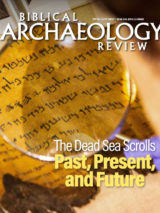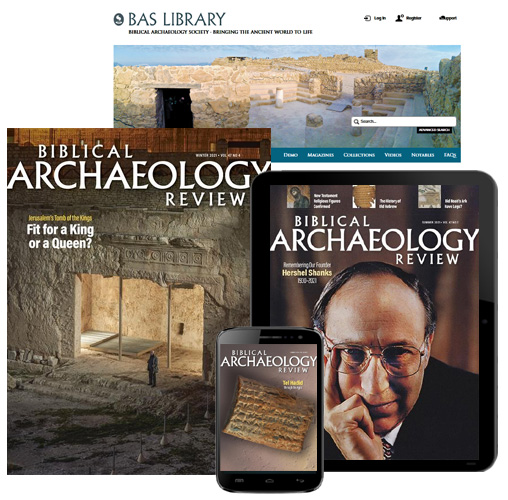Copper Mines in the Arabah
Was Shishak’s Biblical Campaign About Copper?

Ushtabi of Wendjebaendjedet, a high-ranking official of Pharaoh Psusennes I. Credit: The Israel Museum, Jerusalem, Elie Posner.
A recent scholarly article has published new data regarding the source of Egyptian copper during the Egyptian Third Intermediate Period (c. 1070 B.C.E–665 B.C.E.), showing that Egypt’s copper likely originated in the Arabah, the wide desert valley that forms the modern border between Israel and Jordan.[i] In addition to showing trade connections, this discovery could also provide new evidence on the reasons for the famous military expedition of the Egyptian pharaoh Shoshenq I (biblical Shishak) to the southern Levant in the mid-tenth century B.C.E.
At the height of Egypt’s power during the New Kingdom (c. 1550–1070 B.C.E.), Egypt formed complex trade networks that supplied its empire with valuable goods, including copper—obtained from Sinai and the Arabah—that was used to produce bronze weapons and luxury objects. With Egypt’s decline at the end of the Late Bronze Age (c. 1150 B.C.E.), however, the trading networks collapsed and the copper mines were abandoned. It was only during the subsequent Third Intermediate Period that bronze objects again circulated widely in Egypt. This dramatic increase in bronze artifacts has led scholars to wonder how Egypt procured the necessary copper for their production.
To answer this question, a team from the Israel Museum and Tel Aviv University recently took samples from several Egyptian artifacts dated to the Third Intermediate Period. The team performed chemical analyses on four bronze funeral statuettes from the reign of Pharaoh Psusennes I (r. late 11th century B.C.E.) and concluded that the copper from the figures almost certainly originated from the Arabah. Given that the Arabah shows no signs of having been under direct Egyptian control during this period, the team believes that Egypt likely received copper through local trade networks rather than direct exploitation.
Become a Member of Biblical Archaeology Society Now and Get More Than Half Off the Regular Price of the All-Access Pass!
Explore the world’s most intriguing Biblical scholarship
Dig into more than 9,000 articles in the Biblical Archaeology Society’s vast library plus much more with an All-Access pass.

What does all of this have to do with Shoshenq I, the famous Shishak of the Bible who supposedly threatened Jerusalem during the reign of Rehoboam (1 Kings 14:25–26; 2 Chronicles 12:1–12), only a half century after the reign of Psusennes I? While it has long been thought that part of Shishak’s reason for invading the southern Levant was to gain access to Arabah copper, there was little firm evidence to support this hypothesis. With these new data, the team suggests that Shishak’s campaign was aimed at creating a monopoly on the Levantine copper mines and pushing out competition for this scarce and important resource. If this is correct, Shishak’s reported ransack of Jerusalem could be understood as an attempt to reassert dominance over the Levantine kingdoms to prevent them from overturning Egypt’s new role in the copper trade.
Read more in the BAS Library:
It Is There: Ancient Texts Prove It
by Nadav Naʼaman
With unqualified certainty, Margreet Steiner asserts that in the Late Bronze Age (1550–1150 B.C.E.), the period just before the Israelite settlement, there was “no … town, let alone a city” of Jerusalem. As far as the archaeological record is concerned, there is, for that period, “simply nothing.”
Egyptian Papyrus Sheds New Light on Jewish History
by: Karel van der Toorn
The enigmatic Papyrus Amherst 63 was likely created by the descendants of the Aramean and Judean soldiers who in the fifth century B.C.E. had been stationed at the southern Egyptian border. Recorded in a cursive script derived from Egyptian hieroglyphs, the Aramaic texts of the Amherst papyrus keep challenging what we know about Aramean religion and the history of the Hebrew Bible.
Must-Read Free eBooks
Want more Bible history?
Sign up to receive our email newsletter and never miss an update.
All-Access Pass
Dig into the world of Bible history with a BAS All-Access membership. Biblical Archaeology Review in print. AND online access to the treasure trove of articles, books, and videos of the BAS Library. AND free Scholar Series lectures online. AND member discounts for BAS travel and live online events.
Subscribe Today







